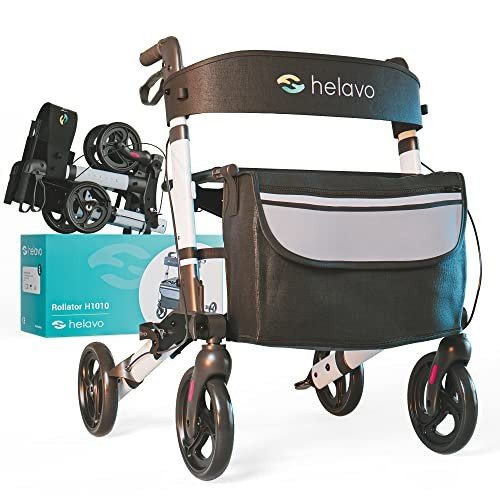
16
MayThe 10 Most Terrifying Things About Medical Walker
Understanding Medical Walkers: A Comprehensive Guide
Medical walkers act as important mobility aids for people recuperating from surgical treatment, managing persistent illnesses, or handling age-related mobility issues. These devices not just improve physical self-reliance but likewise enhance safety, enabling users to browse their environments with greater ease. This post checks out the types, benefits, functions, and considerations connected with medical walkers, in addition to some frequently asked questions.
Tabulation
- Kinds Of Medical Walkers
- Benefits of Using a Medical Walker
- Key Features to Consider
- Often Asked Questions
- Conclusion
1. Kinds Of Medical Walkers
Medical walkers are offered in various designs, catering to different needs and choices. The primary types consist of:
| Type of Walker | Description |
|---|---|
| Standard Walker | A rectangular frame with four legs, providing stability and assistance. |
| Two-Wheeled Walker | Similar to a standard walker however equipped with wheels at the front for simpler movement. |
| Three-Wheeled Walker | A lightweight walker with three wheels, permitting more maneuverability, ideal for indoor use. |
| Rollator Walker | A walker with four wheels, hand brakes, and a seat, ideal for longer distances and resting needs. |
| Hemi Walker | Created for individuals who can use only one hand, featuring a tripod-like design. |
2. Benefits of Using a Medical Walker
Using a medical walker presents several benefits that contribute to the user's general well-being, including:
- Increased Stability: Walkers offer a stable base of support, minimizing the threat of falls.
- Improved Mobility: They allow users to move more quickly, promoting independence.
- Discomfort Relief: By redistributing weight, walkers can minimize pain in the joints, especially in the hips and knees.
- Posture Support: These gadgets motivate appropriate posture, decreasing stress on the back.
- Boosted Confidence: Users typically feel more safe and secure utilizing walkers, causing better self-esteem and increased activity levels.
3. Key Features to Consider
When selecting a medical walker, it's crucial to examine various features to find the right fit. Here are some vital elements to think about:
- Weight Capacity: Ensure the walker can support the user's weight while maintaining stability.
- Height Adjustment: Look for a walker with adjustable height settings to accommodate the user's height and provide comfortable grip.
- Material: Lightweight Pink Tri Walker with Lockable Brakes aluminum walkers are easier to navigate, while steel walkers use stronger support however might be heavier.
- Wheel Quality: If choosing a wheeled walker, think about the wheel size and tread. Bigger wheels navigate unequal surfaces more easily.
- Seat Availability: If users will be walking for longer periods, a walker with an integrated seat can offer rest breaks when needed.
- Brakes: Hand brakes are particularly crucial for safety in Collapsible Rollator walkers to manage speed and stop when needed.
Types of Walkers with Features Comparison Table
| Walker Type | Weight Capacity | Height Adjustment | Wheels | Seat Available | Brakes |
|---|---|---|---|---|---|
| Requirement Walker | As much as 300 lbs | Yes | No | No | No |
| Two-Wheeled Walker | Approximately 300 lbs | Yes | Yes | No | No |
| Three-Wheeled Walker | Approximately 250 pounds | Yes | Yes | No | No |
| Rollator For Petite Walker | Approximately 400 lbs | Yes | Yes | Yes | Yes |
| Hemi Walker | As much as 250 lbs | Yes | No | No | No |
4. Often Asked Questions
Q1: Who need to use a medical Senior Walker?A: Medical walkers are useful for individuals recovering from surgery, experiencing balance problems, or needing support due to age-related mobility challenges. Q2: Can a medical walker be adjusted?A: Yes, a lot of
medical walkers are height-adjustable to accommodate various user heights, allowing for a more comfortable grip. Q3: How do I select the best walker for my needs?A: Consider elements such as the
user's weight, height, kind of mobility issues, and whether they require a seat or brakes. Testing the walker for convenience and stability before purchase is likewise suggested. Q4: Are there any safety suggestions connected with utilizing a medical walker?A: Yes, users should ensure they do not lean too
greatly on the walker, use it on stable and level surfaces, and constantly make sure
the brakes are engaged when seated or stationary. Q5: Can walking with a medical walker aid with rehabilitation?A: Absolutely. Medical walkers are frequently suggested as part of rehab programs as they motivate
exercise, which aids in recovery and mobility enhancement. 5.
Conclusion Medical walkers play a vital function in boosting the quality of life for people facing mobility difficulties. With various types and features offered, picking the ideal walker includes considering the user's particular needs and circumstances. By understanding their benefits and proper use, people can gain back independence, improve their mobility, and browse their environments safely. Whether for short-term healing or long-lasting assistance, the best medical walker can significantly boost a user's overall well-being. Integrating a medical walker into one's day-to-day routine can be a transformative decision, making it much easier to get involved in life's daily activities while ensuring safety and confidence.


Reviews